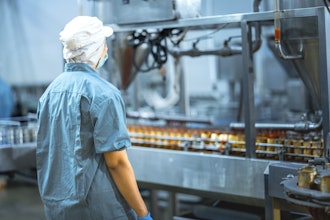
Glass is a surprising material. While commonly portrayed as a fragile material easily broken by rogue baseballs, the fact is that there is a variety of specialty glasses that are designed explicitly to provide strength in extreme heat and cold, high pressure, and a number of other challenging environments.
Specialty glass can be strengthened in one of two common ways: chemical strengthening processes and thermal tempering processes. Each process is functionally similar — they both alter glass’ outer surface, changing its compression compared to its interior, but differ in both specifics and the unique advantages that they provide.
Chemical Strengthening
In the chemical strengthening process, glass is submerged into a chemical bath comprised primarily of molten potassium salt.
Over time, the bath draws out sodium ions naturally found in the glass and replaces them with the potassium ions found in the bath. Potassium ions, an alkali metal, are notably larger than sodium ions, so their presence in the surface of the glass creates a state of compression; the core of the glass is left in a state of compensating tension.
The high-performance glass generated by the chemical strengthening process is very strong and, when performed properly, leaves no discernable surface distortion thanks to the very shallow layer of alkali-enriched material.
Other benefits offered by chemical strengthening include a large range of precise properties to suit virtually any application, achievable by altering the chemical bath’s composition, and the ability to treat glass that is considerably thinner than glass that can be thermally tempered.
Chemically strengthened glass can be utilized in harsh and challenging environments, as well as in medical and power generation applications, conductors, semiconductors, and more.
Thermal Tempering
Thermal tempering performs the same basic function as chemical strengthening — altering tension levels of different layers of glass — but does so physically as opposed to chemically.
In the tempering process, glass is superheated and then immediately rapidly cooled. When heated, the glass expands: when cooled quickly, the exterior of the glass contracts, particularly around the edges and on the surfaces. Because the core of the glass retains heat for a longer period of time, it does not contract as much as the surface; this leads to a compressed surface and a core exerting compensating tension.
Tempered glass is commonly used in high pressure, high temperature, and extreme temperature fluctuation applications, including a wide array of industrial environments. Because of how it breaks — into small, generally circular pieces, as opposed to long, sharp shards — it is used in many safety glass applications.
Chemically & Thermally Strengthened Glass
Chemically strengthened and thermally tempered glass are both widely used, in everything from household items to extremely complex and challenging aerospace applications.
At Swift Glass, we have nearly a century of experience in the custom glass fabrication field, producing glass for virtually every industry and application. Our capabilities include, among many other services, high quality chemical strengthening and thermal glass tempering.
To learn more about the high performance glass we produce, and to help determine if a particular type of glass is suitable for your application, download our Glass Material Properties Chart for free today.




![Laird Custom Lcs[1]](https://img.foodmanufacturing.com/files/base/indm/all/image/2018/03/Laird_Custom_LCS_1_.5a9ece94d7b0e.png?auto=format%2Ccompress&fit=crop&h=167&q=70&w=250)















